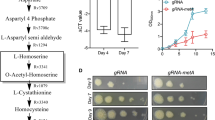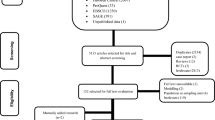Abstract
PREVIOUSLY, one of us suggested using salicylhydroxamic acid as an antitubercular agent1. The substance was subjected to clinical examination by another of us (S.H.) and showed promising results in fifteen cases of pulmonary tuberculosis. The substance was well tolerated by the patients, when large doses of 10–20 gm./day were administered.
This is a preview of subscription content, access via your institution
Access options
Subscribe to this journal
Receive 51 print issues and online access
$199.00 per year
only $3.90 per issue
Buy this article
- Purchase on SpringerLink
- Instant access to full article PDF
Prices may be subject to local taxes which are calculated during checkout
Similar content being viewed by others
References
Urbański, T., Nature, 166, 267 (1950); Gruzlica (Tuberculosis), 18, 206 (1950).
Urbański, T., and Lewenstein, W., Roczniki Chemii (in the press).
Urbański, T., Malinowski, S., Piotrowska, H., and Zakrzewski, L., Roczniki Chemii (in the press).
Urbański, T., Serafinowa, B., Malinowski, S., Slopek, S., Kamieńska, I., Venulet, J., and Jakimowska, K., Gruzlica (Tuberculosis), 20, 157 (1952).
Hornung, S., and Krakowska, M., Gruzlica (Tuberculosis), 20, 469 (1952).
Author information
Authors and Affiliations
Rights and permissions
About this article
Cite this article
URBAŃSKI, T., HORNUNG, S., SLOPEK, S. et al. New Hydroxamic Acids as Antitubercular Agents. Nature 170, 753–754 (1952). https://doi.org/10.1038/170753a0
Issue date:
DOI: https://doi.org/10.1038/170753a0
This article is cited by
-
Influence of 5-Bromosalicylhydroxamic Acid on Serum Cholesterol-level
Nature (1963)
-
Fungistatic Activity of some Hydroxamic Acids
Nature (1957)
-
Une nouvelle famille de composés tuberculostatiques: les amidoximes
Experientia (1954)



